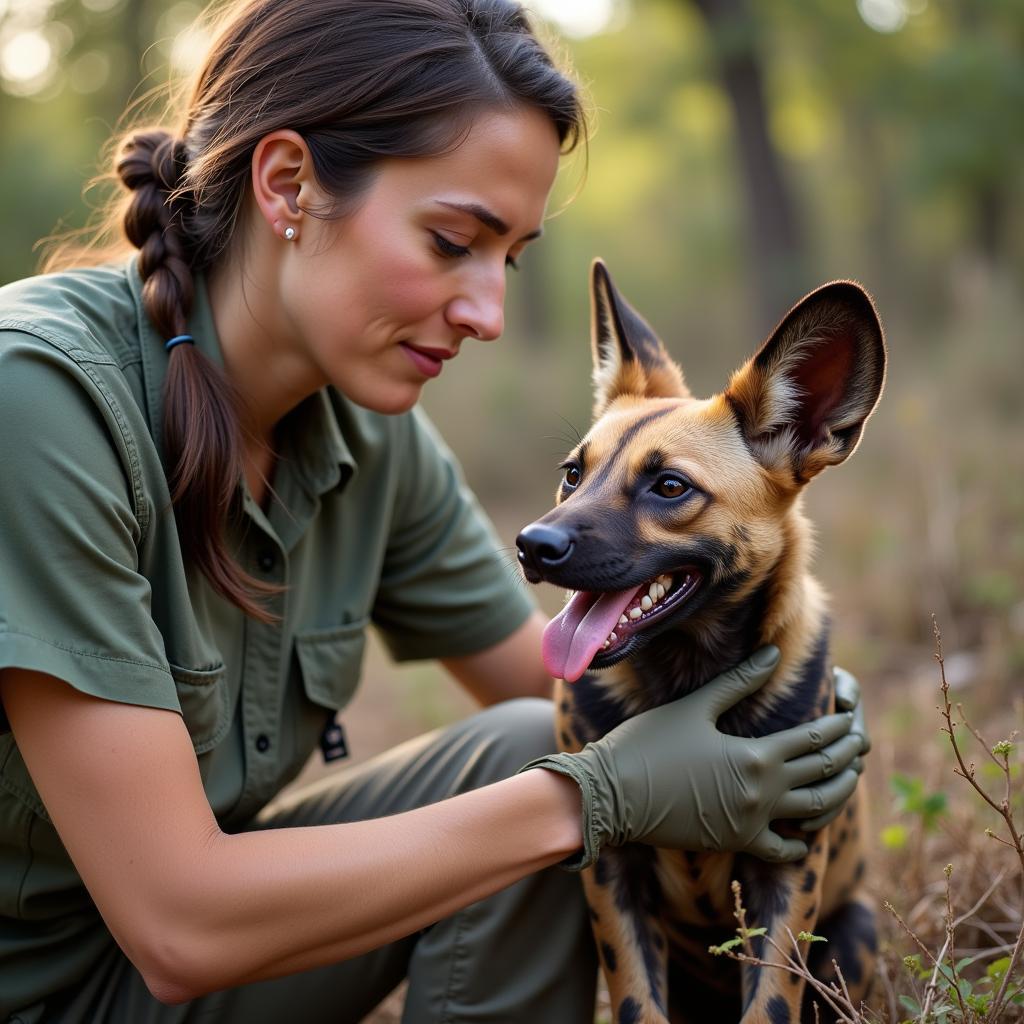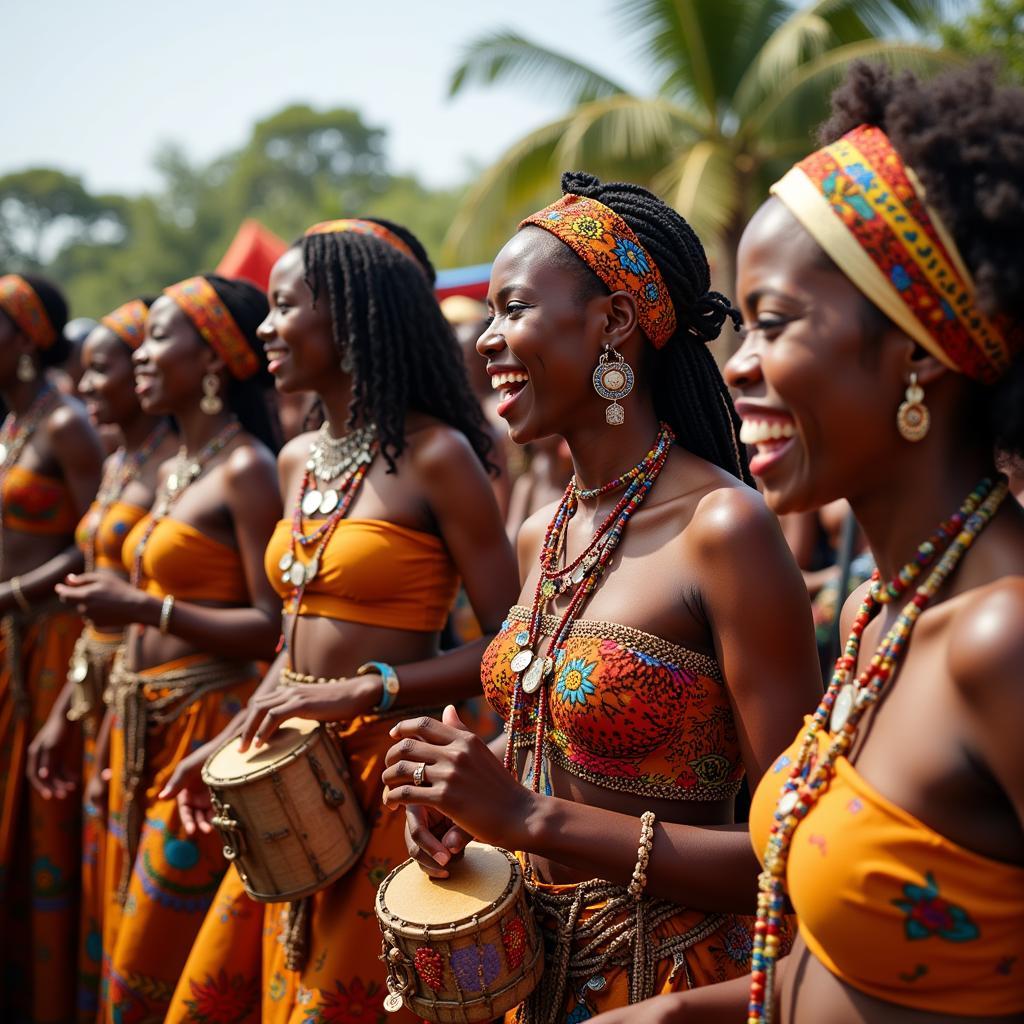African Bush Dog: The Painted Hunter of the Savanna
The African Bush Dog, also known as the painted dog or painted wolf, is a wild canine found only in sub-Saharan Africa. These strikingly beautiful creatures are known for their unique, mottled coats, incredible stamina, and highly social nature. Often misunderstood and labeled as mere scavengers, African bush dogs play a crucial role in maintaining the delicate balance of their ecosystem.
A Pack of Unique Individuals
One of the most striking features of the African bush dog is their individualistic coat patterns. No two individuals are alike, with each sporting a unique combination of black, brown, yellow, and white patches. These patterns, resembling abstract paintings, serve as camouflage in the dappled light of the savanna, helping them blend seamlessly into their surroundings.
 African Bush Dog Pack in Savanna
African Bush Dog Pack in Savanna
Unlike many other canids, African bush dogs have only four toes on each foot, lacking the dewclaw found in species like wolves and domestic dogs. This adaptation further enhances their agility and speed, allowing them to reach impressive speeds of up to 37 miles per hour during hunts.
Masters of Social Harmony
African bush dogs are highly social animals, living in tightly knit packs that can range from 2 to 20 individuals. These packs operate as a cohesive unit, with a dominant breeding pair leading the group. Unlike other social carnivores, aggression within the pack is remarkably low, demonstrating a level of cooperation and social intelligence rarely seen in the animal kingdom.
This social harmony extends to raising their young. Pups are born blind and helpless, relying heavily on the entire pack for survival. While the dominant female nurses her litter, other pack members contribute by regurgitating food for the pups and guarding them from predators. This cooperative breeding strategy ensures a higher survival rate for the vulnerable young.
Efficient Hunters of the Open Plains
African bush dogs are highly skilled hunters, relying on their exceptional stamina and teamwork to bring down prey much larger than themselves. Their preferred hunting grounds are the open grasslands and woodlands of sub-Saharan Africa, where they target antelopes like impalas and gazelles.
Their hunting style is a testament to their coordinated effort. Unlike other predators that rely on stealth, African bush dogs employ a chase-down technique. Using their impressive speed and endurance, they relentlessly pursue their prey over long distances, often taking turns chasing until the exhausted animal collapses.
Conservation Challenges and Hope for the Future
Despite their resilience and adaptability, African bush dogs face numerous threats to their survival. Habitat loss due to human encroachment, disease outbreaks like canine distemper, and conflicts with livestock farmers have all contributed to a decline in their populations.
 African Bush Dog Conservation Efforts
African Bush Dog Conservation Efforts
However, there is hope for these unique canines. Conservation organizations and researchers are working tirelessly to protect the remaining populations. These efforts include habitat restoration projects, anti-poaching patrols, and community outreach programs to mitigate human-wildlife conflicts.
The Future of the Painted Hunters
The African bush dog, with its vibrant colors and cooperative spirit, is a testament to the diversity and wonder of the African wilderness. Understanding the importance of their ecological role and supporting conservation efforts is crucial for ensuring that these remarkable creatures continue to thrive in the wild. By raising awareness and promoting responsible tourism practices, we can all play a part in securing a brighter future for the painted hunters of the savanna.
FAQs about African Bush Dogs
Q: Are African bush dogs dangerous to humans?
A: African bush dogs are generally wary of humans and attacks are extremely rare. They are more likely to avoid human contact.
Q: What is the average lifespan of an African bush dog?
A: In the wild, African bush dogs typically live for 7-10 years.
Q: Where can I see African bush dogs in the wild?
A: They are found in several national parks and reserves across southern and eastern Africa.
Q: What is being done to conserve African bush dogs?
A: Conservation efforts include habitat protection, anti-poaching patrols, disease monitoring, and community education.
Learn More About African Canines
Interested in learning more about the fascinating world of African wildlife? Explore our other articles on African canines and discover the diversity of these incredible creatures.
